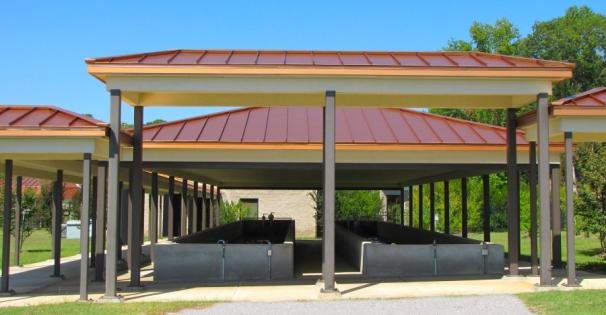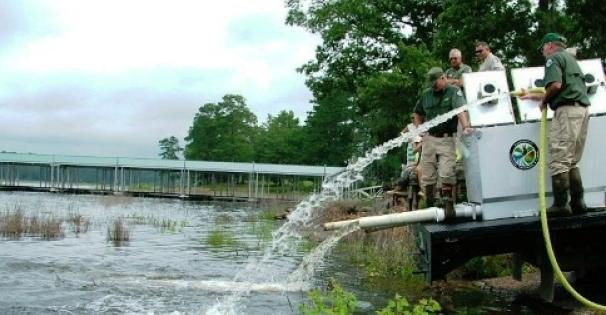
Management
Stocking
Not every system benefits from stocking, but stocking to achieve specific management goals is effective. Fish are stocked to meet the following objectives:
- Establish sport fish populations in new or renovated systems.
- Restore sport fish populations following natural or man-induced fish kills.
- Introduce new species to enhance or establish a new fishery. Care is taken to not adversely impact threatened or endangered species.
- Enhance year-class strength and recruitment of existing fish populations.
- Enhance harvest potential through put-grow-and-take stocking, for example our Community Assistance Program ponds and channel catfish stocking in our state lakes.
Producing
Up to 15 species are reared in the bureau's 29 acres of production ponds in any given year.
Major emphasis is placed on producing:
- Florida-strain largemouth bass. The brood stock we use are offspring of fish from the Waleka National Fish Hatchery in Florida. The current largemouth bass record of 18.15 pounds from Natchez State Park, produced at Lyman Fish Hatchery, came from Richloam Hatchery stock.
- Crappie: white, black, and our very own triploid hybrid--the Magnolia crappie. The Magnolia is a cross between a Blackstripe Black Crappie and a White Crappie. The fertilized eggs are pressure treated to cause the formation of three sets of chromosomes per cell. This makes the fish sterile.
- Bluegill and redear sunfish.
- Northern strain of largemouth bass.
- Gulf of Mexico-strain striped bass and hybrid striped bass, a cross between the white bass and the striped bass. Mississippi participates in the Gulf States recovery effort of the Gulf striped bass.
- Other fish produced are the southern walleye; alligator gar; blue, channel, and flathead catfish; and paddlefish.

